

View images, videos (files or YouTube links), webcam, etc directly in the terminal as ASCII. All images you see below are just made by characters on the terminal command line, drawn really fast.
mpv or vlc because they're too mainstream.This crate is still in early development, but it already has a lot of features. Here's a list of what it can or can't do: - [x] Converts and shows any media to ASCII art in the terminal - [x] Supports images/gifs/videos/webcam and YouTube links - [x] Any resolution, aspect ratio, and framerate - [x] Use any character set as supported by your terminal - [x] Handy pause/unpause and char map selection controls - [x] RGB Colors (on terminals that support RGB colors) - [x] Play sounds - [x] Spark joy - [ ] Full media controls (forward, backward, loop, etc) - [ ] Subtitles - [ ] Replace a fully fledged media player
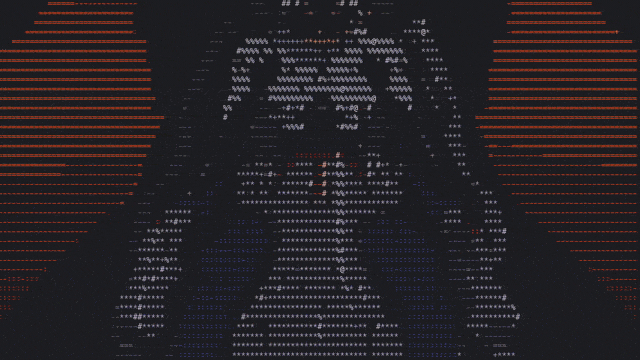
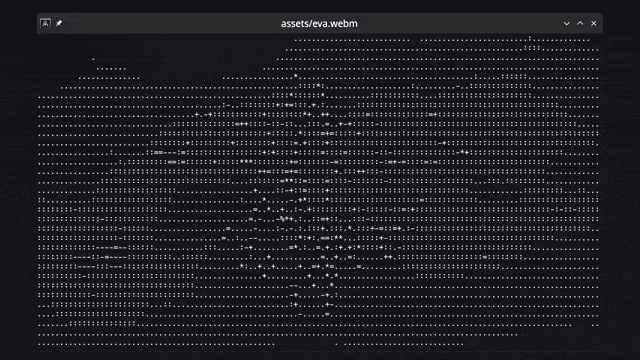
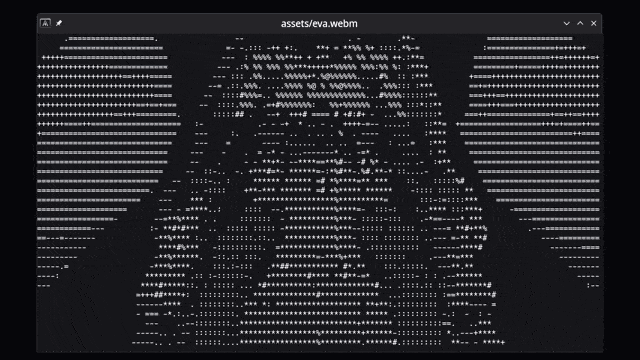
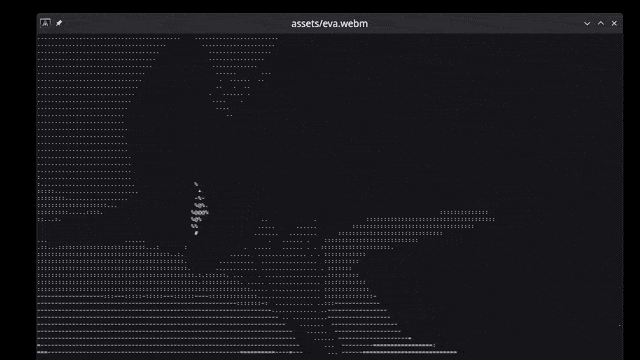
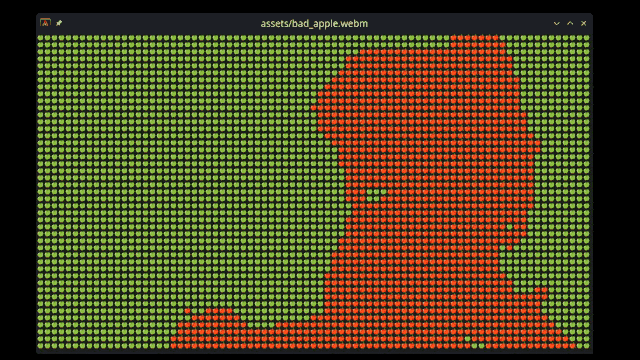
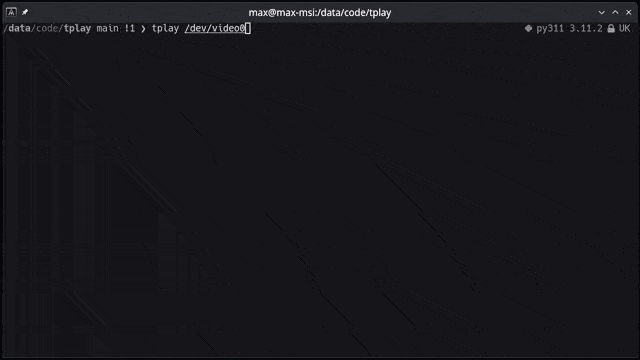
These instructions will get you a copy of the project up and running on your local machine for development and testing purposes.
Being a Rust crate, you will need to have Rust installed on your system. You can find the installation instructions here.
The following dependencies are also required:
OpenCV 4, LLVM, MPV, ffmpeg They are simply installed on linux with your package manager. See below for more details.
Optional dependency for YouTube playback support: yt-dlp
If you're on Linux, you can install all dependencies with your package manager. For example, on Ubuntu:
bash
sudo apt install libopencv-dev clang libclang-dev libmpv1 libmpv-dev ffmpeg libavfilter-dev libavdevice-dev
Installing all prerequisited on Windows is NOT RECOMMENDED as it's a lengthy process prone to errors. I leave a partial description that should work up until crate version 0.2.1
If you are on Windows, use WSL (Windows Subsystem for Linux) and follow the Linux instructions
-- Old instructions for Windows (up until crate version 0.2.1) --
- Download OpenCV prebuilt binaries (I used this one) and it was 4.6.0 at the time of writing.
- Open the package and extract the opencv folder to C:\opencv or any other location you prefer.
- Set the following environment variables (update the paths if you extracted the package to a different location):
- OPENCVINCLUDEPATHS = C:\opencv\build\include
- OPENCVLINKLIBS = opencv_world460 (or whatever version you have, for OpenCV 4.7.0 you want opencv_world470)
- OPENCVLINKPATHS = C:\opencv\build\x64\vc15\lib
- Also add this to your PATH variable : C:\opencv\build\x64\vc15\bin
C:\Program Files\LLVM\binC:\Program Files\yt-dlp\binYou can install the tplay command line tool by running the following command:
```bash
cargo install tplay
So that you can run it from anywhere as
bash
tplay
```bash
git clone https://github.com/maxcurzi/tplay.git
cd tplay
cargo build
cargo test
cargo run --release --
tplay <media> [options]
| Argument | Description |
|--------|-------------|
| media | Name of the file or stream to be processed (required). |
| -f, --fps | Maximum frames per second for the output (default: 60). |
| -c, --char-map | Custom lookup character table to use for the output (default: .:-=+*#%@). |
| -g, --gray | Start in grayscale mode |
| -w, --w-mod | Experimental width modifier for certain characters such as emojis (default: 1). Use a value of 2 if your char_map is composed of emojis. |
| -a, --allow-frame-skip | Experimental frame skip flag. Try to use if the playback is too slow. |
| -n, --new-lines | Experimental flag. Adds newline and carriage return \n\r at the end of each line (except the last). Terminals wrap around and don't need new lines, but if you want to copy-paste the text outside the terminal you may want them. The output would be a single long string otherwise. Uses more CPU. |
Substitute tplay with cargo run --release -- if you plan to run from source.
```bash
tplay
tplay ./image.png
tplay ./image.gif
tplay ./video.mp4
tplay https://www.youtube.com/watch?v=dQw4w9WgXcQ
tplay http://media.developer.dolby.com/Atmos/MP4/shattered-3Mb.mp4
tplay https://www.youtube.com/watch?v=fShlVhCfHig --char-map " ░▒▓█"
tplay https://www.youtube.com/watch?v=FtutLA63Cp8 --char-map "🍎🍏❤️😊" --w-mod 2
tplay /dev/video0 ```
0-9 - change character mapspace - toggle pause/unpauseg - toggle grayscale/colorm - toggle mute/unmuteq - quitfps value, increase font size, reduce the terminal window size, or open with the --allow-frame-skip flag.This is my ASCII media player: there are many like it, but this one is mine.
For other ASCII media players, check out: https://github.com/search?q=ascii+player&type=repositories
Contributions are welcome! Please open an issue or submit a pull request. Some ideas: - Reduce external dependencies and streamline installation process. - Investigate migration from OpenCV to ffmpeg. - More media controls (jump forward, jump backward, loop, etc.). - Testing and feedback on installing and running it on other OSes. - Let me know if you have any other ideas!
This project is licensed under the MIT License - see the LICENSE file for details.
Your Scientists Were So Preoccupied With Whether Or Not They Could, They Didn’t Stop To Think If They Should
Mostly did it for fun while learning Rust. I also wanted to see if it was possible to make a video player that could run in the terminal. I think it's pretty cool that you can play videos in the terminal now. I hope you enjoy it too!